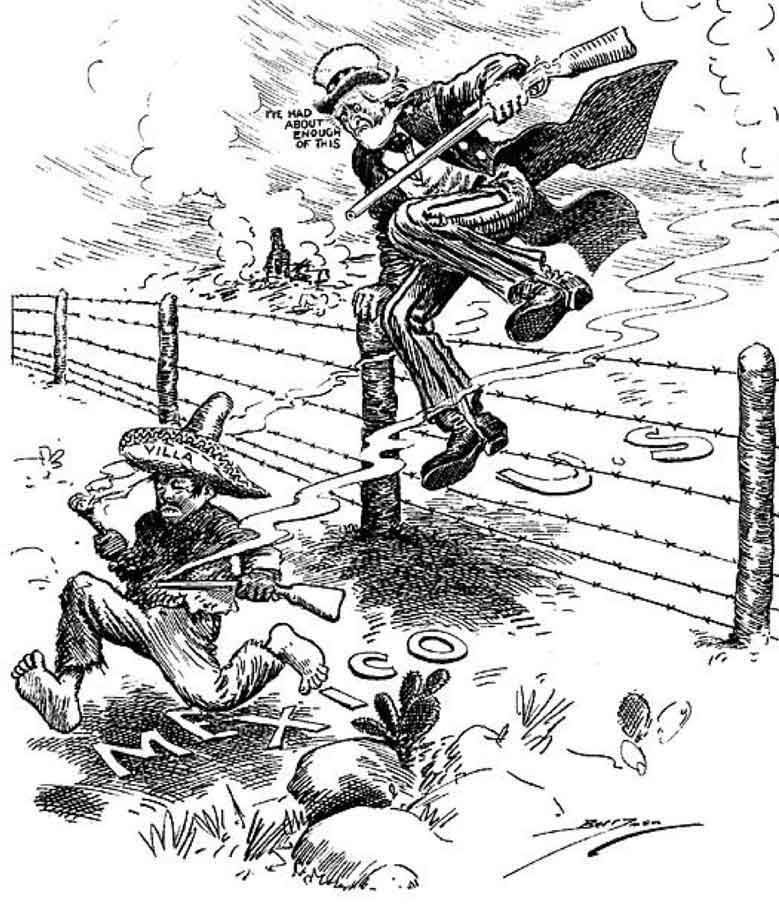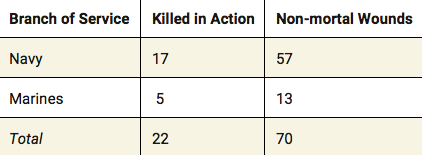United States Interventions in Mexico
1914 – 1917
During the Mexican Revolution (1910-1917), the United States government ordered two military incursions into Mexico. The first entailed an invasion and occupation of the city of Veracruz in 1914, and the second was the “Punitive Expedition” of 1916-1917, commanded by General John J. Pershing. President Woodrow Wilson was reluctant to send U.S. troops to Mexico in 1914, but “yielded to pressure from American business interests, cabinet members, newspapers, and representatives of the Southwest.” Reluctant or not, Wilson desired to depose the government of General Victoriano Huerta by seizing the port of Veracruz, through which flowed most of the armaments and supplies imported for the Mexican army. Wilson’s quarrel with Huerta was twofold: first, Huerta “could not maintain order and protect U.S. private and public interests” in Mexico; and second, Huerta was “a dictator who imposed himself on the Mexican republic after murdering his democratically elected predecessor.” American warships arrived on the scene in April, 1914 and shelled the city, taking “a terrible toll” on the civilian population, which had decided to resist the invasion. At the same time, the U.S. Navy and Marines seized the opportunity to experiment with amphibious landing techniques, with “an almost comic opera” effect. Between the landing and the occupation (which lasted through November) U.S. troops did help oversee the removal of Huerta from office mainly by supplying the revolutionary forces of Venustiano Carranza with arms and other critical materials.

When a revolutionary faction headed by Francisco “Pancho” Villa staged a raid on the town of Columbus, New Mexico in 1916, killing sixteen Americans in the process, President Wilson ordered a force under General Pershing to find and capture Villa and thus eliminate the threat that Villa’s band of 500 posed along the U.S.-Mexican border. With 12,000 soldiers, observation aircraft, cavalry, and motorized supply vehicles in support, the Punitive Expedition penetrated 419 miles into Mexico in search of the outlaws. They encountered serious resistance only a few times, and never found Villa. In the meantime, with the Americans chasing after him, Villa’s popularity mushroomed as did his band of combatants, which grew to number about 5,000 by the time President Wilson ordered Pershing to withdraw in January 1917.
Carranza, who was acting president of Mexico at the time, was elected president under a new constitution just a few weeks later. And not long after that, Pershing was appointed commander of the American Expeditionary Force, the nation’s most important contribution to the Allied war effort in Europe during World War I.
RECOMMENDED READING
Blood on the Border: The United States Army and the Mexican Irregulars
by Clarence C. Clendenen
My Life Before the World War, 1860-1917, A Memoir of the General of the Armies John J. Pershing
by John T. Greenwood
In the Shadow of the Mexican Revolution: Contemporary Mexican History, 1910–1989
by Héctor Aguilar Camín and Lorenzo Meyer
Woodrow Wilson: a Biography
by John Milton Cooper, Jr.
Anales Gráficos de la Historia Militar de México, 1810-1991 (Spanish Edition)
by Gustavo Casasola
All books are available at our Museum Library which is open to the public every Thursday from 10am to 4pm.
AMERICAN CASUALTIES

